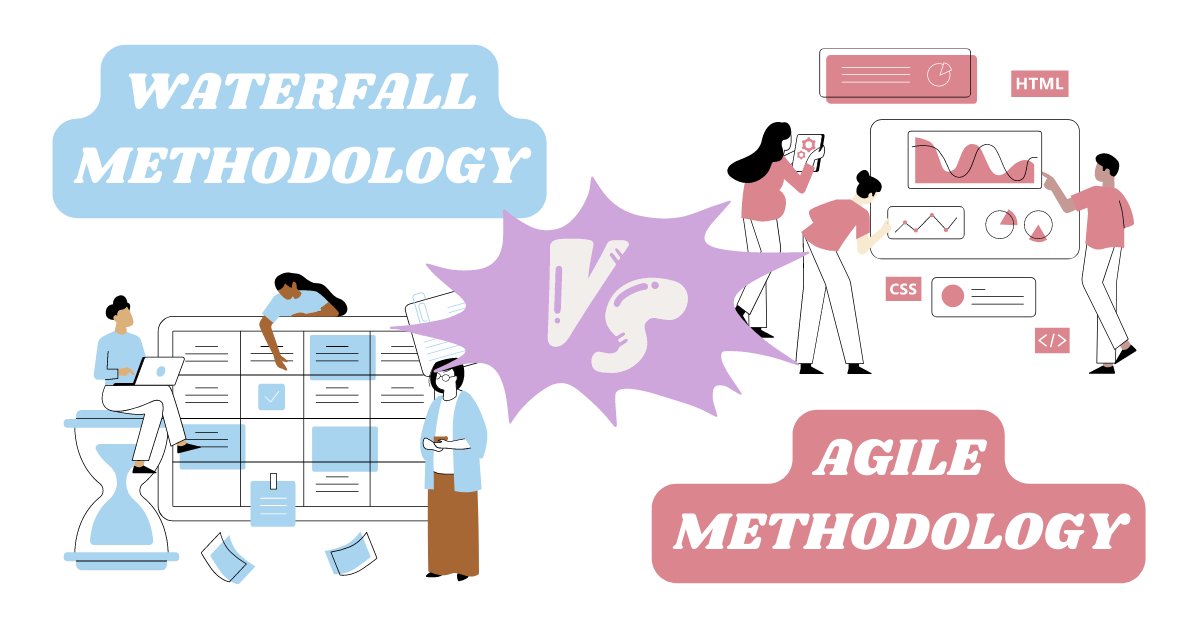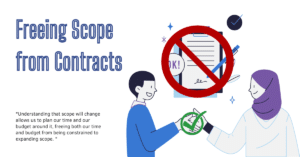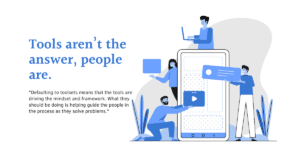Waterfall development or Agile development?
You’re working with a development team to build a web app for your business. You need a plan of action that will allow you to work effectively on your app within an 8-month time frame. If you have any experience in project management, you’re probably familiar with Waterfall methodology. This will clearly establish your goal, as well as a step-by-step layout on how to reach that goal.
Before you decide to go the traditional route, consider the following: What if the desired end goal isn’t as clearly defined as you thought it would be in the beginning? What if market conditions change drastically in a way that would cause the need to redesign software components? What if what you think you’ve specified clearly was not understood as clearly as you would have hoped? These are common issues that a Waterfall approach would have in a development setting, and they are issues that Agile Methodology aim to address.
Agile is not a one-size-fits-all solution, however. While we consider it to be your strongest option when developing software, the truth is that different approaches meet different needs. That’s why we think it’s only fair that we look at both approaches critically in a side-by-side comparison.
Waterfall Methodology
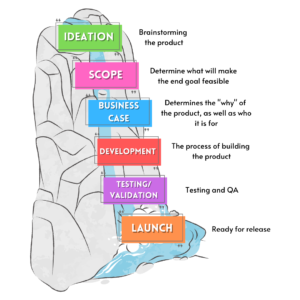 Waterfall Methodology is a project management discipline that approaches each step in a project linearly. The goal of the product, the features, the use cases, etc. is all defined clearly before the project can begin. The pieces of the project timeline are then broken up into phases and completed one by one. The next phase of the project cannot be started until the phase before it is finished, and each phase flows into the next (hence the name, Waterfall).
Waterfall Methodology is a project management discipline that approaches each step in a project linearly. The goal of the product, the features, the use cases, etc. is all defined clearly before the project can begin. The pieces of the project timeline are then broken up into phases and completed one by one. The next phase of the project cannot be started until the phase before it is finished, and each phase flows into the next (hence the name, Waterfall).
Waterfall Pros and Cons
As stated before, Waterfall is a great plan of action when your end goal is clearly defined. Its rigidity in operational design ensures that every specification is met, and that a project development team is given very clear instructions on what work must be done. This also ensures that a strict timeline is followed which provides reliable deadlines. However, this rigidity is exactly its downfall in a development setting; it does not allow the flexibility for change needed in a constantly evolving environment. Should an issue, a new standard, or a new technology arise late in development, it would require a lot of backtracking to address. Also, a traditional Waterfall team does not allow for input in the development process, and once the project is defined at the beginning, the client is hands off until they receive a finished product.
Agile Methodology
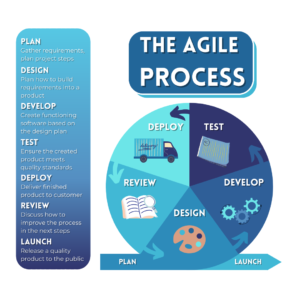 Agile Methodology is cyclical in its phases of development. Rather than set the standard for the entire working period at the beginning, features and goals are constantly revisited to ensure that the project vision still meets the needs of the client. To assure the integrity of this principle, team members of the client’s business are invited to join the development team in the process, as well as stakeholders of the client being invited at the end of each cycle to review what has been accomplished. Rather than build the product piece by piece, the development team creates the Minimum Viable Product (MVP). The MVP’s only purpose is to function properly, but with each iteration it becomes closer to the client’s goal.
Agile Methodology is cyclical in its phases of development. Rather than set the standard for the entire working period at the beginning, features and goals are constantly revisited to ensure that the project vision still meets the needs of the client. To assure the integrity of this principle, team members of the client’s business are invited to join the development team in the process, as well as stakeholders of the client being invited at the end of each cycle to review what has been accomplished. Rather than build the product piece by piece, the development team creates the Minimum Viable Product (MVP). The MVP’s only purpose is to function properly, but with each iteration it becomes closer to the client’s goal.
Agile Pros and Cons
The biggest Pro we can list that Agile has above Waterfall is flexibility in design. In fact, the fourth of the Four Core Values of Agile states “Responding to Change over Following a Plan.” Any challenges met in Agile can be dealt with swiftly and immediately, making it a go-to design philosophy for many in the development world where change and adaptation are not only a must, but they’re also an inevitability. Right after that, the biggest win is in communication. Agile involves the client into the process, with the expectation that they participate in the development of their product. Iterations are constantly delivered, providing transparency in the products lifetime. Agile’s lack of a linear timeframe may be the one big issue it has, which can lead to unpredictability in the developments timeline and costs adding up. While in Waterfall you’re paying for a final product, in Agile you’re paying for a team. That is to say that while development can be smoother and more consistent with Agile, the process can take longer, and the deadline is more guideline than law.
What works best for you?
While we and most other development teams swear by Agile Methodology, we don’t promise that it’s the solution that meets everyone’s needs. What we will say instead is this: your product will ultimately reflect which working philosophy you choose. What do you believe your product needs? How involved should you be in its development? Will your product need to adapt to modern demands as software advances? Be sure to ask yourself these questions and any others that may arise before you choose one Methodology over the other or contact us if you have any questions about working with an Agile team!
If you’d like to learn how Agile can transform your business, contact us at info@psg-solutions.com.
